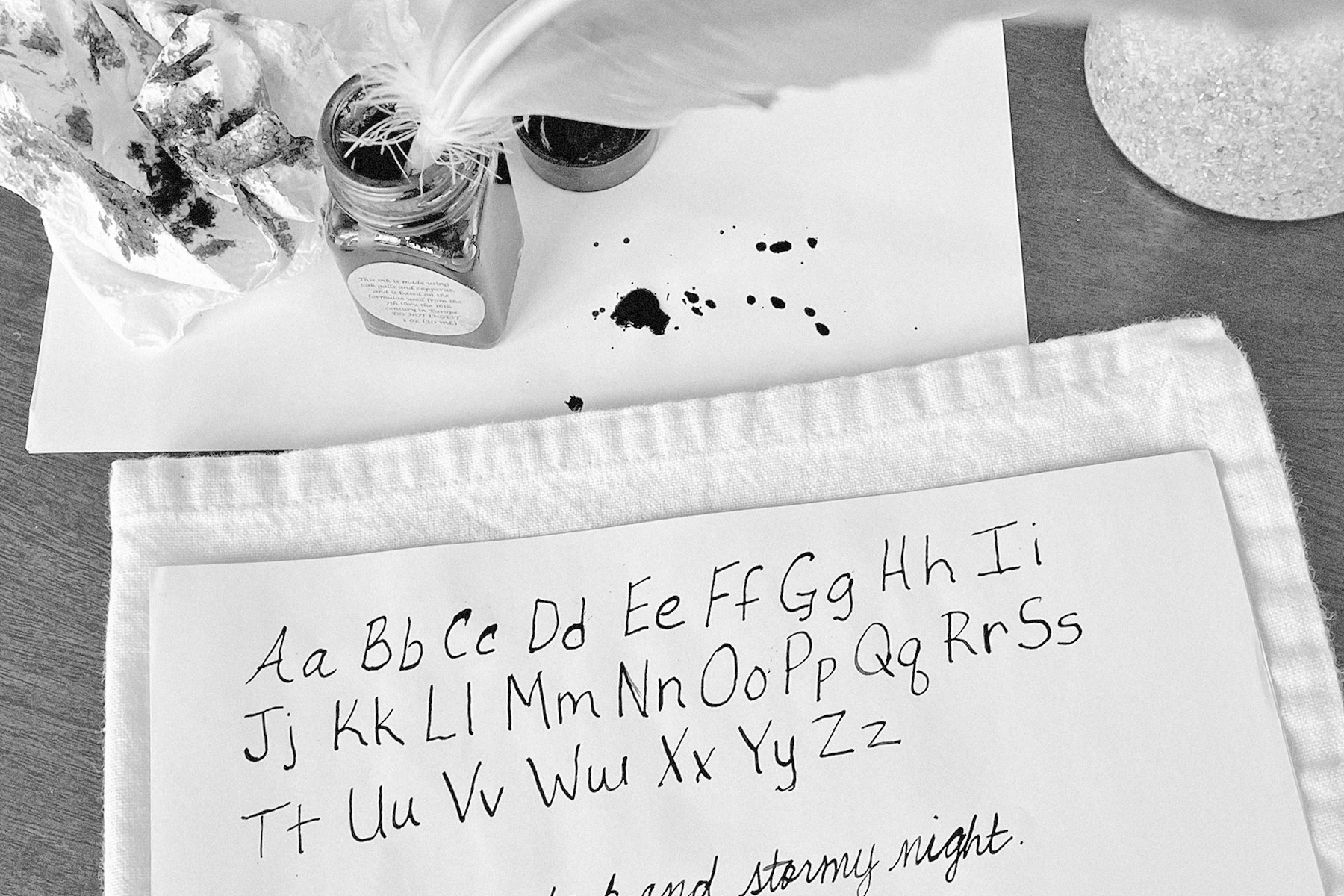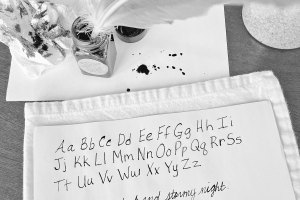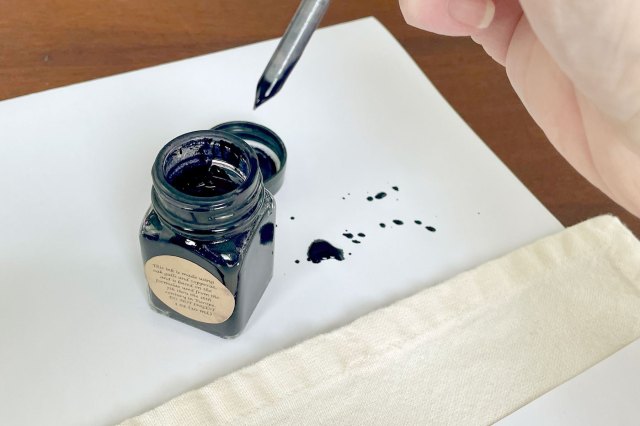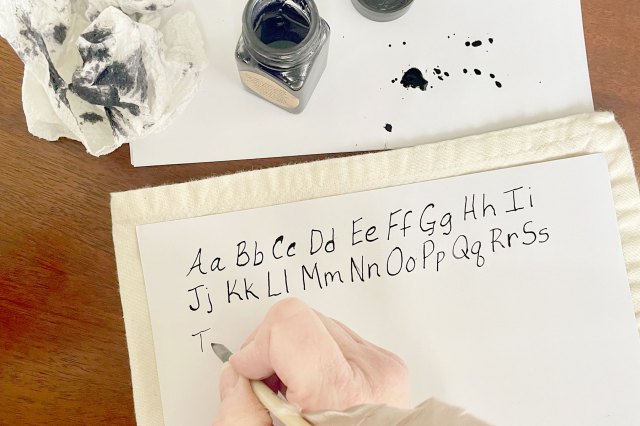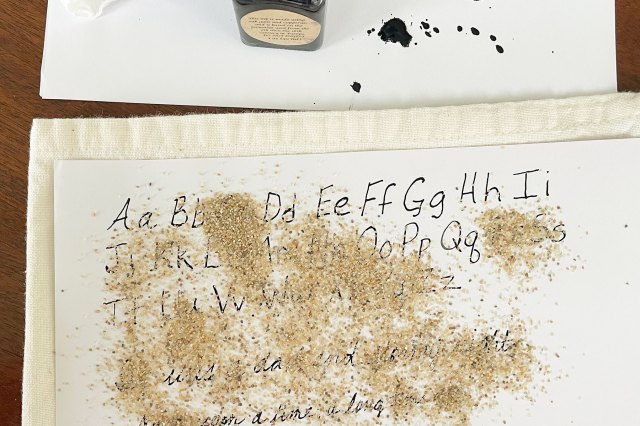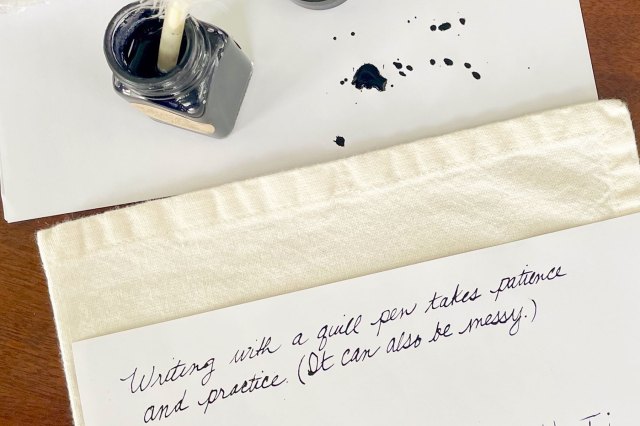We Tried Writing With a Quill, and Here’s What We Learned
The use of quill pens dates back to the sixth century CE, when the feathers of large birds — primarily geese, turkeys, swans, and even crows — replaced the reed pens that had been used previously. Though it’s an obsolete writing utensil today, the quill pen remains a symbol of education, literature, and artistic expression. Many important historical documents were written using quill and ink, from the Magna Carta to the Declaration of Independence, and white quills are still laid out every day the U.S. Supreme Court is in session.
In pop culture, the Harry Potter series has helped generate interest in the old-fashioned writing instrument, and Taylor Swift, noting the influences of Charlotte Brontë and period films, has referred to some of her music as “Quill Pen Songs.” “If my lyrics sound like a letter written by Emily Dickinson’s great-grandmother while sewing a lace curtain, that’s me writing in the quill genre,” she explained at the Nashville Songwriter Awards in 2022.
So what is it actually like to write with the quill pens of yore? To answer that question, I turned to the internet for authentic supplies and expert advice, and set out scribbling. Here’s what I learned from the experience.

First, What Is a Quill?
A traditional quill pen consists of a feather that has been trimmed to around 9 inches long, had its shaft stripped of barbs, and had the inside and outside of the hollow barrel cleaned of membrane and wax. The quill is then dried, typically by curing it in sand, and the tip is shaped into a nib with a channel split (cut) to hold the ink.
The earliest fluid inks were carbon-based black inks that are believed to have originated in China around 2700 BCE. Iron gallotannate (iron gall) ink eventually replaced carbon and became the primary ink used with quill pens from the Middle Ages until the beginning of the 20th century. Iron gall ink is a permanent, deep purple-black or blue-black ink that darkens as it oxidizes, and is made from iron salts and gallotannic acids from organic sources (such as trees and vegetables). The Codex Sinaiticus, written in the fourth century CE and containing the earliest surviving manuscript of the Christian Bible, is one of the oldest known texts written with iron gall ink.
You may also like
Recommendations For You
-
01.
 Science & Industry
Science & IndustryWhy Did Doctors Wear Beak Masks During the Bubonic Plague?
-
02.
 Science & Industry
Science & Industry5 Inventions That Came Out of the Great Depression
-
03.
 Science & Industry
Science & Industry6 Amazing Breakthroughs Made by the Ancient Greeks
-
04.
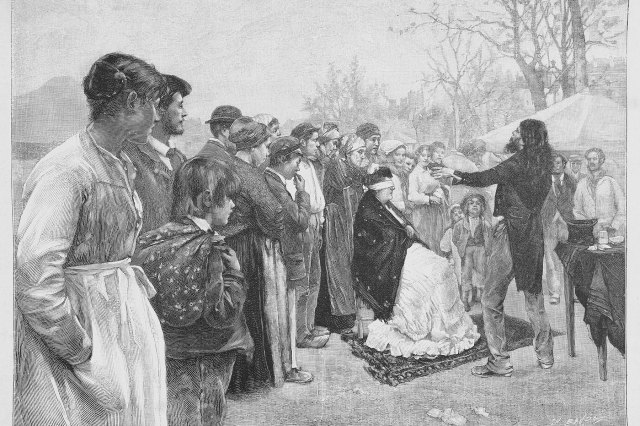 Science & Industry
Science & Industry6 Shocking “Scientific” Beliefs From Victorian England





